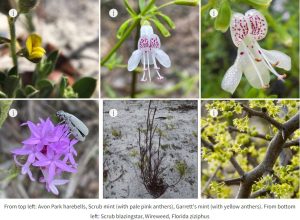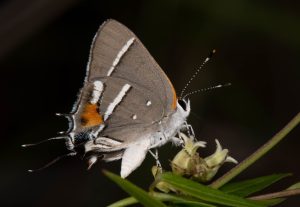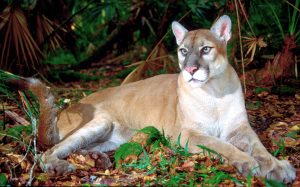Just a few weeks ago I took my son to his first concert. Well, he had been to other shows, but this was the first seeing a band he hears all the time and sings their songs. He challenged me to work that into a blog. I will do him one better and make the entire blog themed to this band. All these changes trickling out from EPA make it seem we are being Trampled by Turtles. So read on the find out why these are coming out. How does this fit the EPA Endangered Species Act Workplan.
Trying to decipher all these federal updates may have you asking Where is my Mind?. I promise there is some method and reason to these massive changes. To make a long story short, EPA has been sued a lot. The courts, several of them, agreed and told EPA they need to get into compliance and quickly. As a move to The Middle EPA developed a plan to quickly (relatively speaking) get pesticides into compliance with these court mandated requests. Its not to say EPA wasn’t working to protect species. They just weren’t robust enough in their official processes, nor a fast enough process, to meet their mandates. Read on to see the components of this plan and where the overall roadmap stands.
Registration
The EPA does not entirely ignore endangered species. In fact, it takes extensive measures during its registration process to minimize impacts on non-target species. The difference is in the decision-making framework. The EPA does a risk mitigation method, kind of a cost benefit analysis, when registering products. Their goal isn’t zero risk, its reduced risk and plenty of benefit. The Endangered Species Act is a precautionary principle, meaning basically no risk and no harm. So, EPA considered endangered species, it was just on the Outskirts of what would be considered precautionary. Going forward EPA will consider endangered species more directly in the registration process and make more sweeping decisions up front, rather than registering a product and then waiting for the Services (FWS and NOAA Marine Fisheries) to formally consult. We talked about that process for Biological Evaluation and Opinions.

Herbicide Strategy
The updates from EPA have been, proposals, drafts, rumors, I feel like we have had to Wait So Long to get something final. Well now we have it in the Herbicide Strategy, its real and approved. This is the first of the plans to come from EPA Endangered Species Act Workplan. Now for some that might make you want to pour a Whiskey, but its not as bad as we feared. The main goal here is to reduce soil erosion and pesticide drift from agricultural production. The EPA recognizes in this strategy that there are unlikely to be endangered species on a farm (eeee I eee I O), or even the plants they rely on. So, if you can keep pesticides on the farm and protect the soil adjacent you will save the Wildflowers and the habitat endangered species might rely upon next to the farm.
What this strategy does is assigns points to farms based on how likely drift or erosion would be. For instance, a sandy, laser leveled field with a raised berm around it (lots of Florida fields are this way) would be lower risk of drift and get fewer points. A field in Colorado on the side of a mountain in rocky soil, clearly poses a higher risk of erosion and drift, and so gets higher points. A farmer would figure out how many points their field requires, then use various mitigation methods to match or exceed the assigned points. Do that, follow the label, and away you go with farming. Fail to meet those points and that product is unavailable for use to you. This allowed EPA to move away from product-by-product decisions and put mitigations in place that quickly protected not just endangered species, but also the regular species surrounding the farm. Good news is many farmers are already doing many of the mitigations as part of their production practices, so little changes are likely other than officially documenting those practices.

Insecticide Strategy
Have any of you ever spent a Midnight on the Interstate? How many bugs covered your windshield? Floridians driving south in May know that so many love bugs hit the glass that it sounds like a rainstorm. Well, we can’t protect those bugs from cars, but the EPA needs to protect other bugs from pesticides. Whereas the Herbicide Strategy focused entirely on the farm, this strategy will drift, pun intended, a little beyond. Because plants generally stay rooted, the herbicide strategy doesn’t consider the risk of endangered plants migrating onto the farm and experiencing harm. Well insects are much more mobile so the EPA must consider that as well. Besides potentially endangered insects, the EPA must also consider other endangered species reliant on those insects. While a final strategy remains under development, the draft proposal aligns closely in scope and direction with the Herbicide strategy. Consider endangered species when registering insecticides, minimize drift and movement off the farm, identify high risk areas geographically, communicate mitigations on the label and associated websites. While many more details will emerge as the strategy is finalized, the comment period recently closed, so it will be some time before we see those details.

Rodenticide Strategy
We keep adding strategies it seems like there Ain’t No Use In Trying to keep up with all this. Imagine being the EPA and having to sort through this! Professionals and homeowners use rodenticides in a wide variety of settings. Rodents can eat stored food, destroy crops, spread disease, and cause an unbelievable amount of damage. The primary products used to control them work by preventing blood clotting. This works quickly and effectively in rodents…but can also work in other species, particularly birds. The EPA has already addressed some of these issues by requiring bait stations to be tamper proof, reducing what products are available to the general public, and other mitigations. However, this does not stop a rodent that is an endangered species from getting into the baits, which is clearly a problem. Additionally, rodenticides pose a threat of secondary poisoning to predators, such as birds of prey, scavengers, and other mammals, who consume rodents that have ingested these poisons. This issue clearly demands attention. The EPA anticipates releasing the final version of this strategy soon, so stay tuned for its arrival.

VSAP
Enough with the acronyms, right? The Vulnerable Species Action Plan was finalized very recently so I need more time to dig in depth. I can say Our Town, the state of Florida, was fairly represented in this plan and will be going forward. We have the 4th highest total of threatened and endangered species, and as seen in the VSAP several critical endangered habitats. The VSAP really aims to pick up the things left over from the “Strategies” and to allow for more nuanced decisions. The primary mechanism that the VSAP will guide is the use of PULAs with the BLT. No that isn’t a sandwich and some new term the hip kids use these days. It’s a mechanism for defining additional restrictions that would apply for certain species in certain areas. A Pesticide Use Limitation Area (PULA) outlines restrictions on a map. The Bulletins Live Two (BLT) platform houses these PULAs. Refer to our previous blogs for details on their functionality and stay tuned for much more guidance on this topic. This is the final pillar of the EPA Endangered Species Act Workplan.
Conclusion
You finally made it to the end, you can claim Victory! Years of work ahead, constant changes, it can be hard to keep up with the EPA Endangered Species Act Workplan. There is a lot of technical work and more things to sift through over the years, but at the end of the day this will benefit us all. Endangered species will be better protected, and thus the environment protected. How do the farmers and applicators benefit? This entire process is introducing more flexibility into this regulatory process AND allowing for more real time changes to occur. It has started an even better dialogue between the EPA and end users of these products. That’s always a good thing.
I did it, I managed to shoe horn a bunch of Trampled By Turtles songs on here, my son should be happy. Hopefully these upbeat tunes will help get you through this longer blog and make up for the bad jokes. Hopefully you learned a little more about the changes that are coming too.
Click to Subscribe
 2
2

